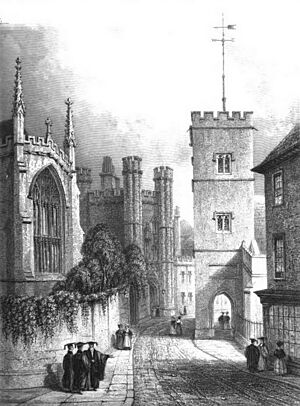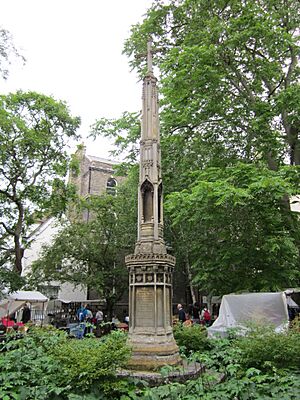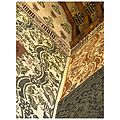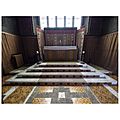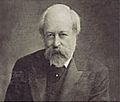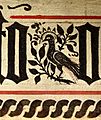All Saints' Church, Cambridge facts for kids
Quick facts for kids All Saints', Jesus Lane |
|
|---|---|

All Saints' Church from the south east
|
|
| General information | |
| Architectural style | Gothic Revival |
| Location | Jesus Lane |
| Town or city | Cambridge, Cambridgeshire |
| Country | England |
| Coordinates | 52°12′30″N 0°07′24″E / 52.208277°N 0.123231°E |
| Construction started | 1863 |
| Completed | 1870 |
| Height | 175 feet (53 m) (spire) |
| Design and construction | |
| Architect | G. F. Bodley |
All Saints' Church is a beautiful old church located on Jesus Lane in the heart of Cambridge, England. It was designed by a famous architect named George Frederick Bodley. The church was built bit by bit between 1863 and 1870. It is a great example of the Gothic Revival style, which brought back old English Gothic designs.
In 1950, All Saints' was given a special Grade I listed building status. This means it is a very important historical building. In 1981, it became part of the Churches Conservation Trust. This trust helps to protect and care for old churches. If you want to visit, it's best to check with the Churches Conservation Trust for opening times.
Contents
History of All Saints' Church
The First All Saints' Church
Before the current church, there was a much older church called All Saints in the Jewry. It stood on St John's Street, Cambridge. People also called it All Saints by the Hospital because it was near the Hospital of St John the Evangelist. This helped tell it apart from another All Saints' Church in Cambridge, which is now gone.
By the 1200s, the church was connected to St Radegund's Nunnery. This nunnery later became Jesus College. The church was rebuilt many times over the years. But by the 1800s, it was too small for the growing number of people in the area. It could only hold about 400 people, even though 1,400 lived in the parish.
The old church had box pews, which were like private boxes that people had to pay to use. This meant poorer people often couldn't attend. So, Jesus College gave some land on Jesus Lane for a new, bigger church. The old church was taken down in 1865. Today, the old churchyard is a public space called All Saints' Garden. It has a special memorial cross designed by Basil Champneys in 1882.
Building the New Church
People first hoped that a famous architect named George Gilbert Scott would design the new church. But instead, G. F. Bodley was chosen. Bodley had been a very talented student of Scott's. He also helped start a company called Watts & Co..
The first stone of the new church was laid on May 27, 1863. The church was officially opened on November 30, 1864. Between 1869 and 1871, the tall tower and spire were added. The design for the spire was inspired by St Oswald's Church in Ashbourne, Derbyshire. The very last decoration was a weather vane. It was given by the Vice-Chancellor of the University of Cambridge. A priest and writer named Herbert Mortimer Luckock helped put it in place.
By the 1920s, All Saints' Church started to have fewer people attending. Many residents of the parish moved to new homes in other parts of the city. Also, University colleges bought larger houses, and their students didn't need a local church to worship in. The last vicar (church leader) started in 1945. When he retired, church services stopped in July 1973.
The church was empty for several years and started to fall apart. There were even plans to tear down part of the building. But these plans were stopped in 1981. Today, the church can be rented for many different events.
Church Architecture
The church's tall spire is a very noticeable landmark in Cambridge. It is about 175 feet (53 m) high. When it was built, it was the tallest building in the city. It is still the city's third tallest building today. Only the chimney of Addenbrooke's Hospital and Our Lady and the English Martyrs Church are taller.
The church is built from brick and special stones called Ancaster and Casterton stone. Its design is based on an early 14th-century style. The church has a main area called a nave, a large south aisle (a side section), a chancel (the area around the altar), and a vestry (a room for clergy). The outside of the church has decorative gargoyles. The spire also has fancy openings called lucarnes.
Inside the Church
All Saints' Church is famous for its amazing and colorful interior. Much of the decoration was designed by the architect Bodley himself. He designed many of the church's features. These include the white alabaster font (where baptisms happen), the pulpit (where sermons are given), and the screen in the south aisle. He also designed some of the textiles, pews, candlesticks, and floor tiles. The rood screen was designed later, in 1904, by John Morley. This screen not only looked good but also hid a large beam. This beam was needed to support the chancel arch because of the heavy spire above it.
The walls and ceilings are covered in complex, bold patterns. These were painted by a company called F. R. Leach & Sons. You can see exotic flower designs and many religious symbols. These include the Sacred Monogram (a symbol for Jesus) and the Fleur-de-lis (a lily symbol). High up on the walls, you can read texts from the Book of Revelation and Psalms in the south aisle. In the nave, there are parts of the Beatitudes from the |Matthew|5:3-12|Book of Matthew. Some of the Beatitudes have been damaged by water. One of the artists who worked on the church was David Parr. He decorated his own house in a similar style. The David Parr House is now open to the public.
The large east window was designed by Edward Burne-Jones and made by Morris & Co. It was put in place in 1866 to remember Lady Affleck. She was the wife of William Whewell, who was the master of Trinity College, Cambridge. Lady Affleck laid the first stone of the church in 1863. She also gave £1,000 to help build it. This window has twenty figures in four rows. Burne-Jones designed 12 of these figures. Ford Madox Brown designed 4, and William Morris designed 4. The diagonal letters and oak leaf borders were designed by Philip Webb.
This window is special because it uses a lot of pale, silver-tinted glass. This was unusual at the time, as most stained glass was dark and richly colored. The pale glass lets in a lot of light, which was important for the chancel. In the north wall of the nave, there are three windows by Charles Eamer Kempe. One window, installed in 1944 by Douglas Strachan, shows famous women. These include Elizabeth Fry, Josephine Butler, Edith Cavell, and Mother Cecile Isherwood. There are also two windows in the south aisle. One is by Ward & Hughes, and the other is by Philip Webb. High up in the west window are two angels, one carrying the sun and one carrying the moon. These were designed and made by William Morris.
All Saints' Today and Tomorrow
In October 2021, the Churches Conservation Trust started working with The Arts Society Cambridge. They began a regular program of events at All Saints' Church. This started with "October Fest," a series of Sunday lunchtime music concerts. These concerts, called "Music At All Saints'," have become very popular. They feature different instruments and music styles. They have even hosted three world premiere performances! These concerts continue monthly on the first Sunday of each month.
Other projects in 2022 included "FABULATION," an art exhibition. It was inspired by the church's interior decorations. Artists Jennifer Campbell, Toby Upson, Cathy Lomax, and Luke Burton created the art. There was also a live performance of ghost stories by M. R. James, an exhibition about the church's textiles, and a traditional magic show. Money raised from these events helps to fix the church's lighting. It also helps to add toilets and running water. A small group of volunteers works with Cambridge City Council to keep the outside of the church looking good. You can find out more on their website: The Painted Church.
In July 2023, volunteers celebrated 50 years since the last church service. They highlighted how much effort it took to save All Saints' from being torn down. They also celebrated its bright future. Professional artists Sophie Michael and Andrew Munks held a new exhibition in March/April 2023. The church also celebrated the coronation of King Charles III. It took part in Heritage Open Days and Open Cambridge, and had a third October Fest.
Gallery
-
Judas Maccabeus by Edward Burne-Jones from the east window by Morris, Marshall, Faulkner & Co.
See also
- Anglo-Catholicism
- Arts and Crafts movement
- British and Irish stained glass (1811–1918)
- English Gothic architecture
- List of churches preserved by the Churches Conservation Trust in the East of England
- St Peter's Church, Cambridge, also in the care of the CCT


